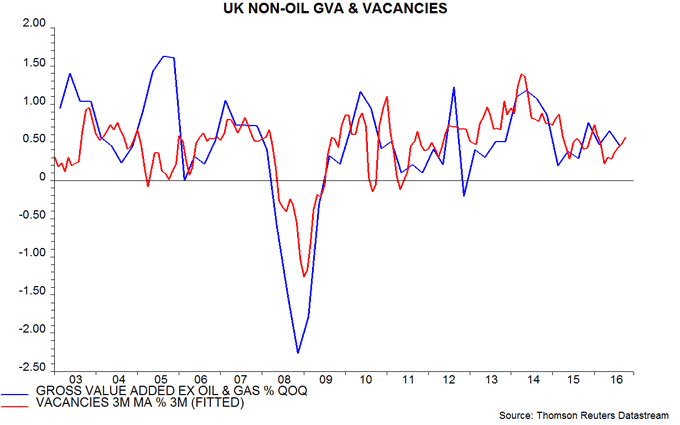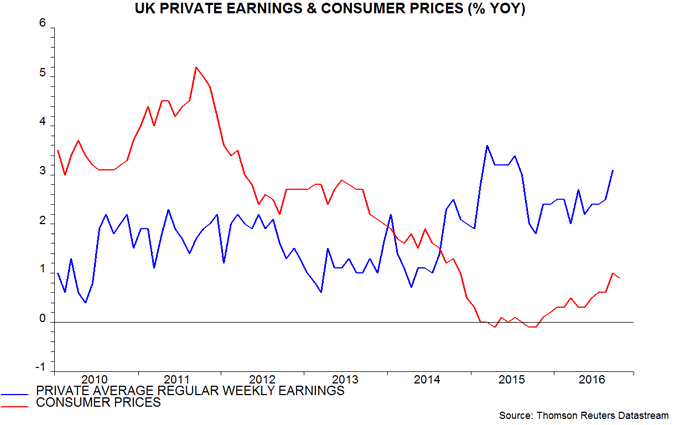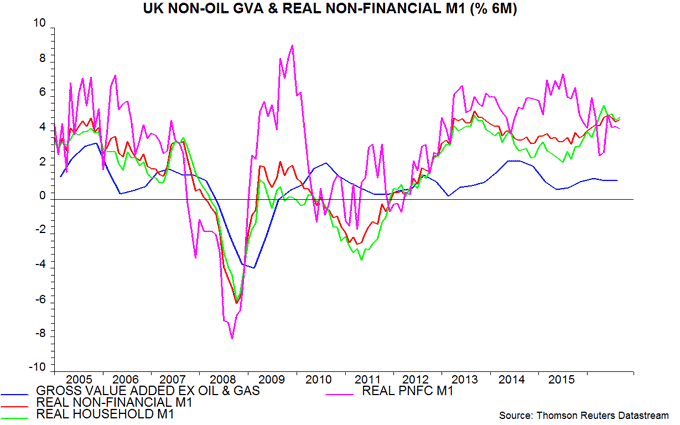UK vacancies data upbeat, wage growth firmer
Amid heightened uncertainty about UK economic performance and prospects following the Brexit vote, a post in early August suggested an “Occam’s razor” approach of using vacancies data as a guide to current activity and narrow money trends to assess the outlook six to 12 months ahead. This resulted in a view that the economy would grow respectably in the third quarter, with momentum sustained into early 2017, at least.
The Office for National Statistics (ONS) today released October vacancies data and the message remains positive. Indeed, three-month growth in the stock of vacancies, reported as a three-month moving average, rose to 1.6%, the fastest since February. This rate of increase is consistent with quarterly gross value added (GVA) growth of 0.5-0.6%, based on a simple model – see first chart. The model, admittedly, regularly goes “off track” but its fit is similar to that of models based on business survey evidence, such as the purchasing managers’ indices. The reason for emphasising the vacancies data in the wake of the Brexit vote was that business surveys were likely to be temporarily “infected” by emotion and uncertainty, as proved to be the case.
The ONS also reported that annual growth of private regular weekly earnings rose to 3.1% in September, the fastest since July 2015 – second chart. The monthly numbers can be volatile but wage pressures may be rising in response to a tight labour market and recovering consumer price inflation. The suggestion that earnings are keeping pace with prices is positive for near-term consumption prospects but increases concern that the coming inflation overshoot will be sustained – see yesterday’s post.
As previously discussed, six-month growth of real narrow money (i.e. non-financial M1 divided by consumer prices) has remained solid since the Brexit vote, consistent with the economy retaining respectable momentum through spring 2017, at least. There has, however, been a moderation in growth of holdings of private non-financial corporations (PNFCs) since last year, offset by an acceleration of household holdings – another reason for expecting economic expansion to remain consumption-led. The PNFC component sometimes leads the total (e.g. before the 2008-09 recession); a further significant slowdown would suggest that Brexit risks to investment spending are starting to crystallise.




Reader Comments